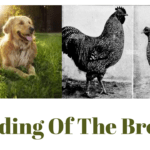Table of Contents
Introduction
When it comes to the animal kingdom, peafowls are among the most captivating creatures. Known for their stunning plumage and striking displays, they have fascinated humans for centuries. Thanks to modern technology, we can now capture these unique creatures on camera and uncover their strange behaviors. In this article, we will explore the world of peafowls, their behavior, and some extraordinary moments caught on camera.
What is a Peafowl?
A peafowl is a large, colorful bird belonging to the pheasant family. There are three species: the Indian Peafowl, the Green Peafowl, and the Congo Peafowl.
Peafowl species
- Indian Peafowl (Pavo cristatus) – The most familiar species, the Indian Peafowl, or Blue Peafowl, is native to South Asia and known for its dazzling blue and green plumage. The male, or peacock, is famous for its magnificent fan-like tail display.
- Green Peafowl (Pavo muticus) – Native to Southeast Asia, the Green Peafowl is larger than the Indian Peafowl and features green and bronze plumage. Both males and females have long, iridescent tail feathers.
- Congo Peafowl (Afropavo congensis) – The smallest and least known species, the Congo Peafowl, is native to the African rainforests. Males have a deep blue and green plumage, while females are reddish-brown.
Peafowl habitat
Peafowls are typically found in forests, grasslands, and even urban areas. Indian Peafowls favor open forests and grasslands, while Green Peafowls are found in denser forests. Congo Peafowls inhabit the African rainforests.
Peafowl Behavior
Mating and courtship rituals
Peafowls have intricate mating rituals, with males performing elaborate displays to attract females. The Indian Peafowl, in particular, is known for its fan-like display, where the male fans out its long tail feathers and shakes them to create an impressive visual and auditory spectacle.
Social structure
Peafowls are social creatures that live in small groups known as parties. While the social structure may vary among species, they generally consist of one dominant male and several females. Males may engage in aggressive displays to establish dominance and protect their territory.
Vocalizations
Peafowls are quite vocal, with a range of calls used for communication. Males have a loud, piercing call, often heard during mating season, while females have softer calls.
Capturing Peafowl on Camera
Photography techniques
Capturing peafowls on camera requires patience and the right equipment. Telephoto lenses are essential for getting close-up shots without disturbing the birds, while a fast shutter speed helps freeze their movements. Observing peafowls from a distance and understanding their behavior can also improve your chances of capturing that perfect shot.
Ethical considerations
When photographing peafowls, it’s essential to respect their space and not disrupt their natural behavior. Keep a safe distance, avoid using flash photography, and follow any guidelines or regulations in place for the area you’re in.
Strange Peafowl Activities Caught on Camera
Unexpected interactions with other animals
Peafowls have been caught on camera engaging in unusual interactions with other species. From playful encounters with deer to confrontations with large cats, these unique moments reveal the complex relationships peafowls share with their fellow inhabitants of the natural world.
Unusual displays
While peafowls are known for their dazzling displays, sometimes they surprise us with something truly out of the ordinary. Cameras have captured peacocks using their plumage to deter potential predators or even interact with inanimate objects like car mirrors.
Peafowl in urban environments
As peafowls continue to adapt to human-dominated landscapes, we’re witnessing their strange antics in urban settings. From peacocks strutting through busy streets to encounters with city-dwelling wildlife, these moments remind us of the importance of coexisting with our feathered friends.
Peafowl Conservation
Threats to peafowl populations
Habitat loss, poaching, and human encroachment are significant threats to peafowl populations. Deforestation reduces their natural habitat, while illegal hunting for their meat and feathers puts additional pressure on these beautiful birds.
Conservation efforts
Conservation organizations and governments are working together to protect peafowls and their habitats. Establishing protected areas, implementing anti-poaching measures, and educating local communities about the importance of peafowls are vital steps in ensuring their survival.
Conclusion
Peafowls are captivating creatures with unique behaviors and stunning displays. By capturing these moments on camera, we gain a deeper appreciation for their beauty and complexity. As we continue to share our world with these incredible birds, it’s crucial that we protect their habitats and work together to ensure their survival.
FAQs
What is the difference between a peacock and a peafowl?
Peafowl is the species, while “peacock” is the male. The female is a “peahen,” and their young are “peachicks.”
Why do peacocks display their feathers?
Peacocks use their feathers to entice mates. The elaborate exhibition shows potential partners their fitness and genetics.
Can peafowls fly?
Peafowls can fly, although not well. They flee predators or perch in trees by flying short distances.
Are peafowls aggressive?
Peafowls aren’t hostile towards humans, but they can be territorial and aggressive against other animals and even their reflections.
What do peafowls eat?
Peafowls eat plants, insects, and small animals. They eat seeds, fruits, insects, and small mammals.








